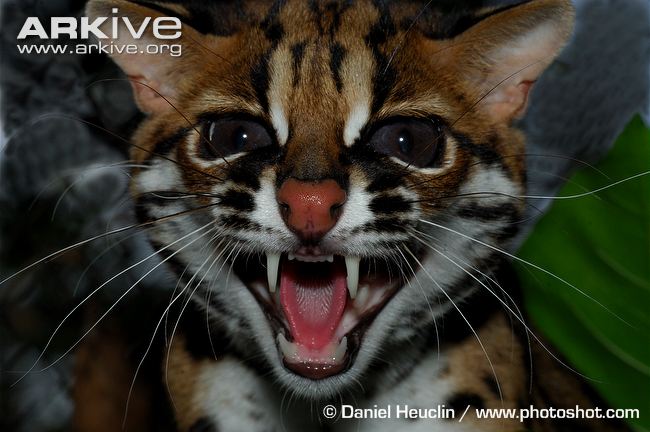Behavior and Interactions
The Leopard Cat is mostly nocturnal, but they do venture out in daytime. The Leopard Cat is small, a master of stealth, and in combination with their camouflage, make them perfect nocturnal hunters. These nocturnal benefits that the Leopard Cat has force it to hunt nocturnal prey (rodents, bats, and insects). Another reason the Leopard Cat is nocturnal is that because the Leopard Cat is small, it can be predated upon (for example the Sumatran Tiger) - so staying out of sight during the day maximizes their safety. Leopard Cats use urine and scat markings to determine territory.
Here is a video of a Leopard Cat marking its territory.
But even more interestingly, when the Leopard Cat isn't marking territory, it hides its urine and feces in water so they don't leave any trace behind. Also, juvenile Leopard Cats will bury their scat near the den to hide their presence. This is not a learned trait because this happens the same way in captivity as well. Even though the Leopard Cat takes precautions, large birds of prey and larger cats prey on them. The Leopad Cat is a predator and maintains the food chain by eating small prey. They can climb well, so they can reach birds and bats when other predators may not be able to do this. The Leopard Cat is also more than capable of swimming, so they can catch fish and other aquatic animals to eat.
The Leopard Cat is the apex predator - at least in the small animal food chain - so there is not much competition for them. The Leopard Cat only faces a few problems, the biggest of which being humans. There are both unintentional and intentional things people do that negatively impact the Leopard Cat. By deforesting their ideal habitat, humans are limiting the Leopard Cat resources. Leopard Cats depend on their specific environment for sustenance, a place to live, and protection from predators. Another big problem is the development of roads by humans, cars kill Leopard Cats frequently. It is not uncommon to see a Leopard Cat carcass on the side of the road in some areas of Asia. Humans also directly hunt Leopard Cats for various reasons. The Leopard Cat pelt is very prized, so many people hunt it to sell its coat. Humans also kill Leopard Cats to protect their live poultry (mostly chicken), young livestock (goats), and pets.
This page was made by Nick Howard.
Click here to learn some interesting facts!
And click here to go home.
